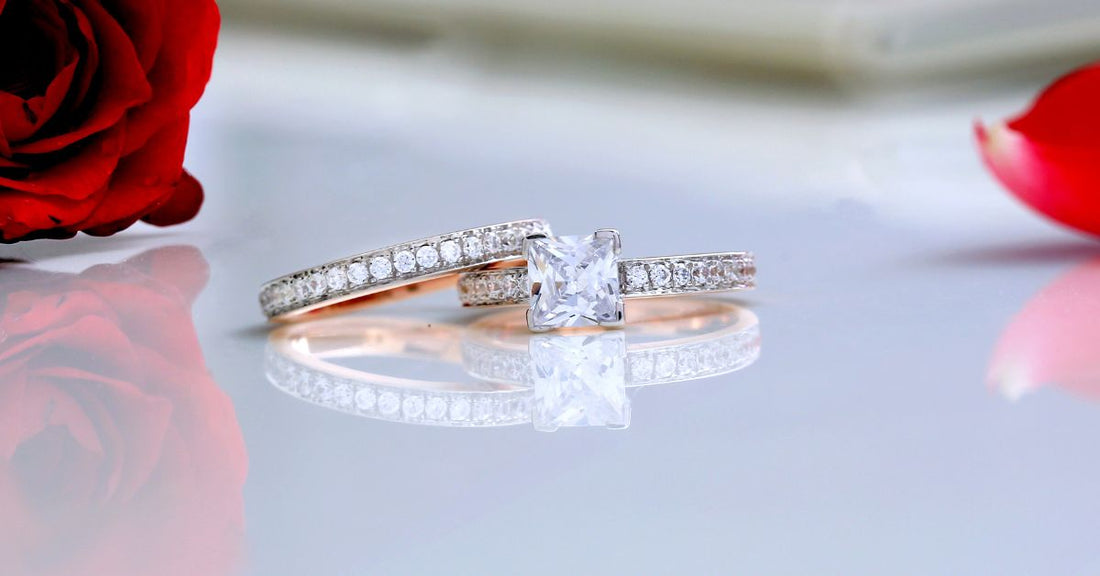
The Ultimate Metal Type Guide for Engagement Ring
The ring – a symbol of forever, a constant reminder of a love story's exciting new chapter. But before you get swept away by the sparkle of the perfect diamond, there's another crucial decision to make: the metal that will hold it all together.
This seemingly simple choice – the type of metal for your engagement ring – can have a big impact on both aesthetics and practicality. Fear not, lovebirds! This guide will be your compass as you navigate the world of engagement ring metals, helping you find the perfect match for your forever love (and their finger).
The most precious metals for engagement rings
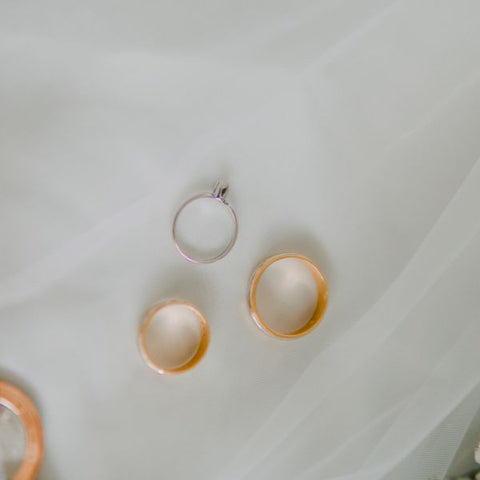
When it comes to choosing the metal for your diamond engagement ring, there are several popular options. The most common ones include gold, platinum, and silver. Among these, gold is by far the most popular choice due to its timeless appeal and durability.
Gold: Gold is a classic choice for engagement rings and comes in various colors including yellow, white, and rose gold. Yellow gold is the traditional choice and gives off a warm, rich hue. White gold, on the other hand, has a silvery appearance and is often plated with rhodium to enhance its shine. Rose gold has a romantic pinkish tint, adding a unique touch to the ring.
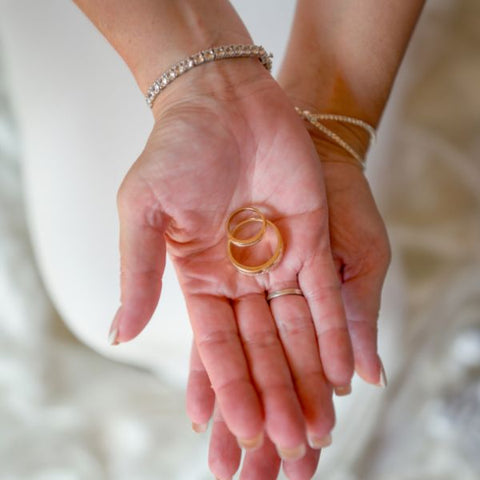
- Yellow Gold: The timeless classic, yellow gold Engagement ring exudes warmth and elegance.
- Pros: Widely available, affordable at various karat weights (more on karat later!), and complements a variety of skin tones. Yellow gold also pairs beautifully with diamonds, enhancing their brilliance.
-
Cons: Softer than other options, making it more prone to scratches with an active lifestyle.
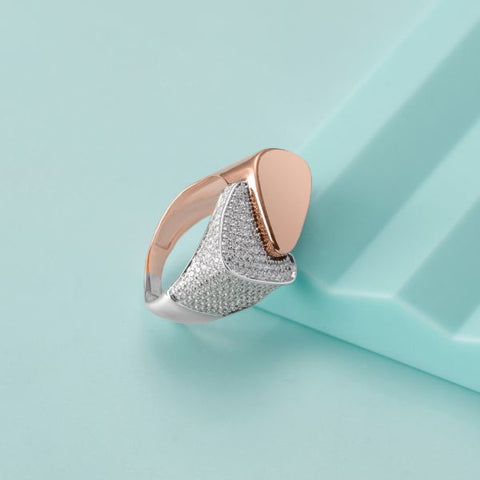
- Rose Gold: A romantic newcomer, rose gold engagement ring has taken the engagement ring world by storm with its soft, pink hue.
- Pros: Incredibly trendy and flatters cooler skin tones. Its blush color adds a touch of whimsy and individuality to the ring.
-
Cons: May require more frequent cleaning to maintain its rosy glow. Not as readily available as yellow gold, potentially leading to a higher price point.
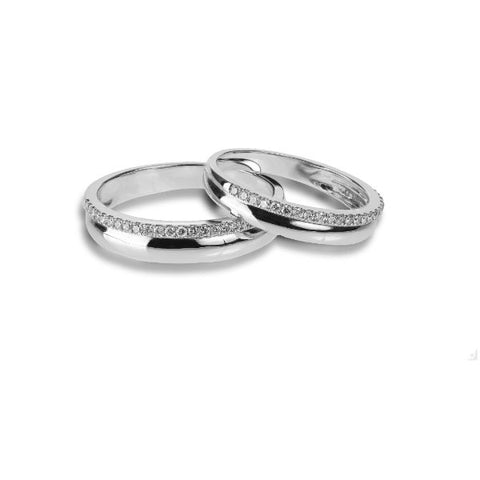
- White Gold: The modern marvel, white gold engagement ring offers a sleek and contemporary look, mimicking the brilliance of platinum at a lower cost.
- Pros: Versatile and pairs well with all diamond colors. White gold's neutral tone allows the center stone to take center stage.
- Cons: Requires rhodium plating for its bright white finish, which may need to be reapplied every few years. Slightly less durable than platinum.
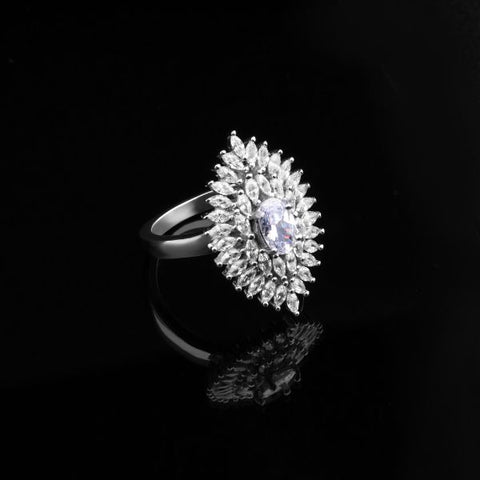
Platinum: Platinum is a strong and durable metal, making it an excellent choice for engagement rings. It has a naturally white color that won't fade or tarnish over time, making it a low-maintenance option. Platinum is also hypoallergenic, making it suitable for those with sensitive skin. However, platinum is usually more expensive than gold due to its rarity and density.
- Platinum: The epitome of strength and sophistication, platinum is a naturally white metal prized for its longevity.
- Pros: The most durable precious metal for engagement rings, ideal for active lifestyles. Platinum's natural whiteness enhances the sparkle of diamonds and requires minimal maintenance.
- Cons: The most expensive option on this list due to its rarity.

Silver: Silver is a more affordable option compared to gold and platinum, making it a popular choice for budget-conscious couples. It has a bright, shiny appearance and can be easily polished to maintain its luster. However, silver is softer and more prone to scratching and tarnishing compared to gold and platinum, so it may not be the best choice for everyday wear.
- Silver: A budget-friendly choice, silver offers a classic and understated look.
- Pros: Highly affordable, making it an attractive option for those with tighter budgets. Silver's cool sheen complements certain gemstones beautifully.
- Cons: Softest metal on this list, prone to scratches and tarnish over time. May not be suitable for everyday wear.
Understanding the Factors to Consider
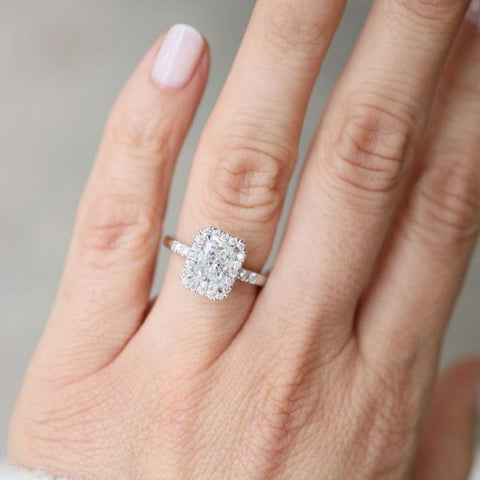
Choosing the ideal metal for your engagement ring goes beyond just aesthetics. Here are some key factors to weigh in on:
- Lifestyle: Are you active with your hands? Opt for a more durable metal like platinum or palladium.
- Budget: Metal prices vary considerably. Consider your budget and prioritize accordingly.
- Skin Tone: Certain metals complement specific skin tones better. Yellow gold warms up cooler tones, while white gold or platinum can flatter warmer tones.
- Style Preference: Do you crave a classic look or a modern edge? Yellow gold offers timeless elegance, while rose gold exudes a romantic vibe. White gold and platinum provide a sleek, contemporary feel.
- Allergy Concerns: If you have sensitive skin, opt for hypoallergenic metals like platinum or palladium.
Metal Allergies: A Breakdown
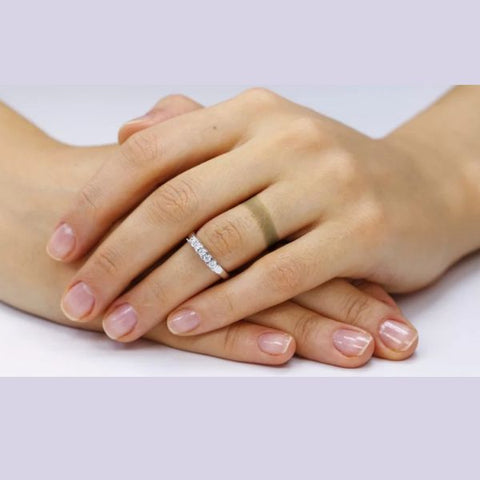
Let's delve deeper more into metal selection. Certain metals can cause skin irritation, redness, and itchiness for some individuals. Here's a table outlining the potential for allergic reactions with various engagement ring metals:
|
Metal |
Hypoallergenic |
Potential Allergens |
|
Platinum |
Yes |
Very low-risk |
|
Palladium |
Yes |
Low risk, but some people may be sensitive to nickel content |
|
White Gold (Unplated) |
No |
May contain nickel, a common allergen |
|
White Gold (Rhodium Plated) |
Generally Yes |
Rhodium plating is hypoallergenic, but can wear off over time, exposing underlying nickel |
|
Yellow Gold |
Generally Yes |
Lower risk than white gold, but allergies to copper alloys are possible |
|
Rose Gold |
No |
Contains copper, a common allergen |
|
Sterling Silver |
No |
Contains copper, a common allergen |
|
Tungsten Carbide |
Yes |
Metal itself is hypoallergenic, but some coatings may contain irritants |
|
Titanium |
Yes |
Metal itself is hypoallergenic, but some alloys may contain nickel |
|
Cobalt Chrome |
No |
May contain nickel and chromium, both potential allergens |
Karat: The Gold Standard
Before diving in, it's important to clear up a potential point of confusion. There are two uses of the word "carat," though spelled slightly differently:
This section focuses specifically on karat (kt) as it applies to metals like gold.
Unlike carats used for gemstones (measured in weight), metal Karat signifies the purity of gold. Think of it as a grading system. The higher the karat number, the more pure gold the metal contains. Here's a breakdown:
- 24K Gold: The king of the karat kingdom, boasting 100% pure gold. This is incredibly soft and rarely used in jewelry due to its susceptibility to scratches and dents.
- 18K Gold: A popular choice, offering a perfect blend of 75% gold and 25% other metals like copper or silver for added strength and durability.
- 14K Gold: Another common selection, striking a balance between affordability and durability with 58.5% gold content.
- 10K Gold: The most affordable option on the spectrum, containing 41.7% gold.
Why Does karat Matter?
Carat directly affects several aspects of your gold jewelry:
- Purity and Value: Higher karat gold commands a higher price due to its increased gold content.
- Durability: Pure gold is soft. Lower karat gold, with its mix of metals, offers better resistance to wear and tear.
- Color: The blend of metals influences the final color of the gold. Higher karat gold retains a richer, warmer tone, while lower karats might appear slightly paler or rosier.
Choosing the Right Carat
The ideal karat for you depends on your priorities:
- For pure luxury and investment: Opt for 18K or higher.
- For everyday wear: Consider 14K for a good balance of beauty and durability.
- For budget-friendly options: 10K gold offers affordability while retaining the gold aesthetic.
Beyond Gold: Does Carat Apply to Other Metals?
While most commonly used for gold, the concept of karat can extend to other precious metals like platinum. However, the measurement system might differ. Platinum, for example, is often graded in percentages of purity (e.g., 95% platinum).
Shining Light on Your Gold Jewelry
Understanding metal carat empowers you to make informed decisions when buying or appreciating gold jewelry. Now, you can confidently decipher those tiny markings and select the perfect piece that reflects your style and budget. So, the next time you admire a gleaming necklace, remember, that it's not just the shine – it's the story of purity revealed by the carat!
FAQ’s
Q: What karat weight should I choose for gold?
A: The ideal karat weight depends on your budget and lifestyle. 14k and 18k offer a good balance of durability and gold content. Higher karat weights are softer and more prone to scratches.
Q: Does rose gold go out of style?
A: Rose gold has become a popular and versatile choice. While trends might evolve, its soft and romantic appeal makes it a timeless option for many.
Q: Is higher karat gold better?
A: Not necessarily. Higher karat gold (like 18k) has a higher gold content, making it softer and more prone to scratches. For engagement rings, 14k gold offers a good balance of durability and gold content.
Q: What metal best complements a diamond?
A: All the mentioned metals complement diamonds beautifully. Yellow gold creates a classic and warm look, while white gold and platinum showcase the diamond's brilliance with a cool, modern aesthetic. Rose gold adds a touch of softness and romance.
Conclusion: Selecting the Perfect Metal - A Symbol of Everlasting Love
Choosing the right metal for your engagement ring is a significant decision. By considering your budget, lifestyle, and your partner's preferences, you can find a metal that not only complements the chosen gemstone but also reflects the strength and permanence of your love. Remember, the most important aspect is selecting a metal that resonates with your love story and will be cherished for years to come.








